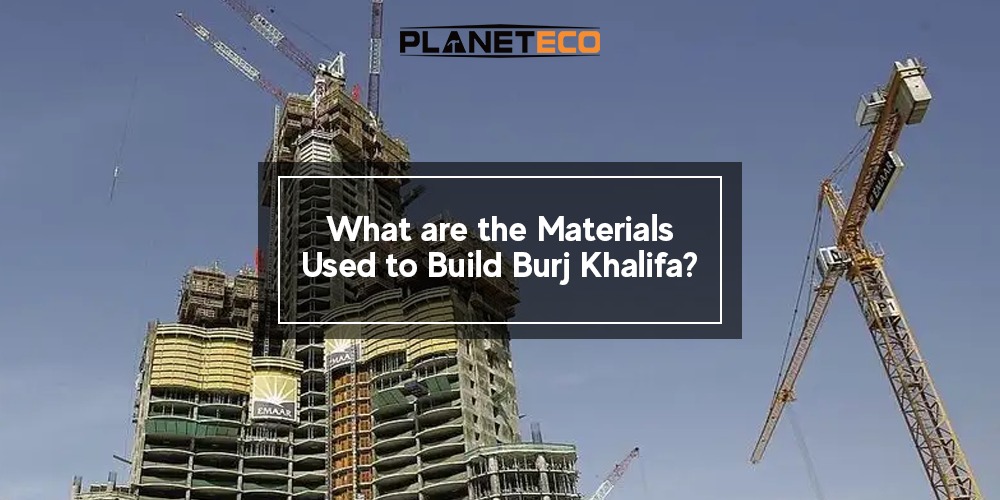Dubai is famous for many iconic landmarks, such as Burj Khalifa. It is famous as an architectural spot because of its engineering. Due to its skyscrapers, height, and beauty, it is well known. Moreover, the use of materials and construction make it remarkable.
As many people know, there is a list of quality materials used in the construction of Burj Khalifa. But they don’t know some secret materials, which is the core building block of this building in Dubai. Let’s have a look at the materials used for the building of Burj Khalifa.
Architecture of Burj Khalifa
In the architecture of Burj Khalifa, there is a triple-lobed footprint. The tower has three elements with a central core in between. Also, the Y modular with setbacks and three wings offers a stable configuration. Other than this, it can provide better floor plates. Besides all, there are 26 helical levels. With the spiral sky warding, these levels decrease the cross-sectional area.
The central core is present at the top in the form of a spire. Other than this, the Y floor plan ensures a view of the Arabian Gulf. Whether viewed from the base or air, this tower demonstrates the Islamic structure. Many expert builders contribute great effort and time to the construction of Burj khalifa. Because of this reason, the expected time for construction exceeded multiple years.
Wind Tunnel Testing:
Burj Khalifa has almost 40 wind tunnels. This can help to check the effect of the wind on the tower. These include initial testing to determine the wind climate of Dubai. Also, these include structural analysis and pressure tests. Other than this, there are temporary conditions we notice during construction. Plus, there were tower cranes to ensure safety.
The stack effect is the process that affects tall buildings. This effect increases with the change in pressure and temperature. Many studies have been done for the determination of the magnitude of changes.
List of Materials Used in the Construction of Burj Khalifa
1. High-Strength Concrete:
The foundation and core of Burj Khalifa rely on high-strength concrete for structural stability.
2. Structural Steel:
Steel plays a crucial role in the framework, providing strength, longevity and support to the overall structure.
3. Aluminum Cladding:
The exterior of Burj Khalifa features aluminium cladding, contributing to its sleek and modern aesthetic.
4. Reflective Glazing:
The building’s signature glass facade is present through the use of reflective glazing, adding to its visual appeal.
5. Stainless Steel Spandrel Panels:
Vertical stainless steel spandrel panels enhance the building’s exterior and contribute to its distinctive design.
Interiors of Burj Khalifa
The tower has sections with sky lobbies on floors 43, 76 and 123. Also, there are art fitness areas on levels 43 and 76. The sky lobbies also include swimming pools and recreational rooms. So, these can be used for events and gatherings. As a result, it provides a better experience. All pools are open for outsiders and residents. As well as this offer swimming opportunity.
Some other facilities are the resident library, Lafayette Gourmet and the store. Other than this, there is valet parking for visitors and guests.
The Chicago office of Skidmore and Merrill LLP interiorly design Burj Khalifa. However, it was led by the award-winning Nada Andric. The interior has glass, stainless steel and polished stones. It also has silver flooring, handmade rugs, stone floors, and stucco walls. The interior was the inspiration of local cultures.
Burj Khalifa is adorned with artistic pieces from Middle East and international artists. Most of the pieces were customized by Emaar as a tribute to global harmony. All the pieces were used to link cultures and communities.
Construction Highlights
For Burj Khalifa, excavation was started in January 2004. During this year, many milestones were passed. It is why this has become the tallest man-made building. In almost 1,325 days of excavation, the building became the tallest in the world.
However, the exterior cladding was started in May 2007. At the same time, this cladding was ended in September 2009. In this vast project, there were more than 380 skilled engineers and technicians. At the start of the installation, the team’s progress rate was 20-30 panels in a day. The construction of Burj Khalifa took longer time than expected because of the quality of materials and the effort builders put into expanding their work.
Conclusion:
The Burj Khalifa is also known as Burj Dubai. It is the tallest structure, at 828 meters in height. Due to its architecture, it is regarded as the symbol of modernism and ambition. So, for the creation of such a structure, there is a need for material selection.
Suppose you want quality materials at affordable rates. Then Planet Eco is the better option for buying all the above-mentioned materials for the durability and longevity of your construction buildings.

